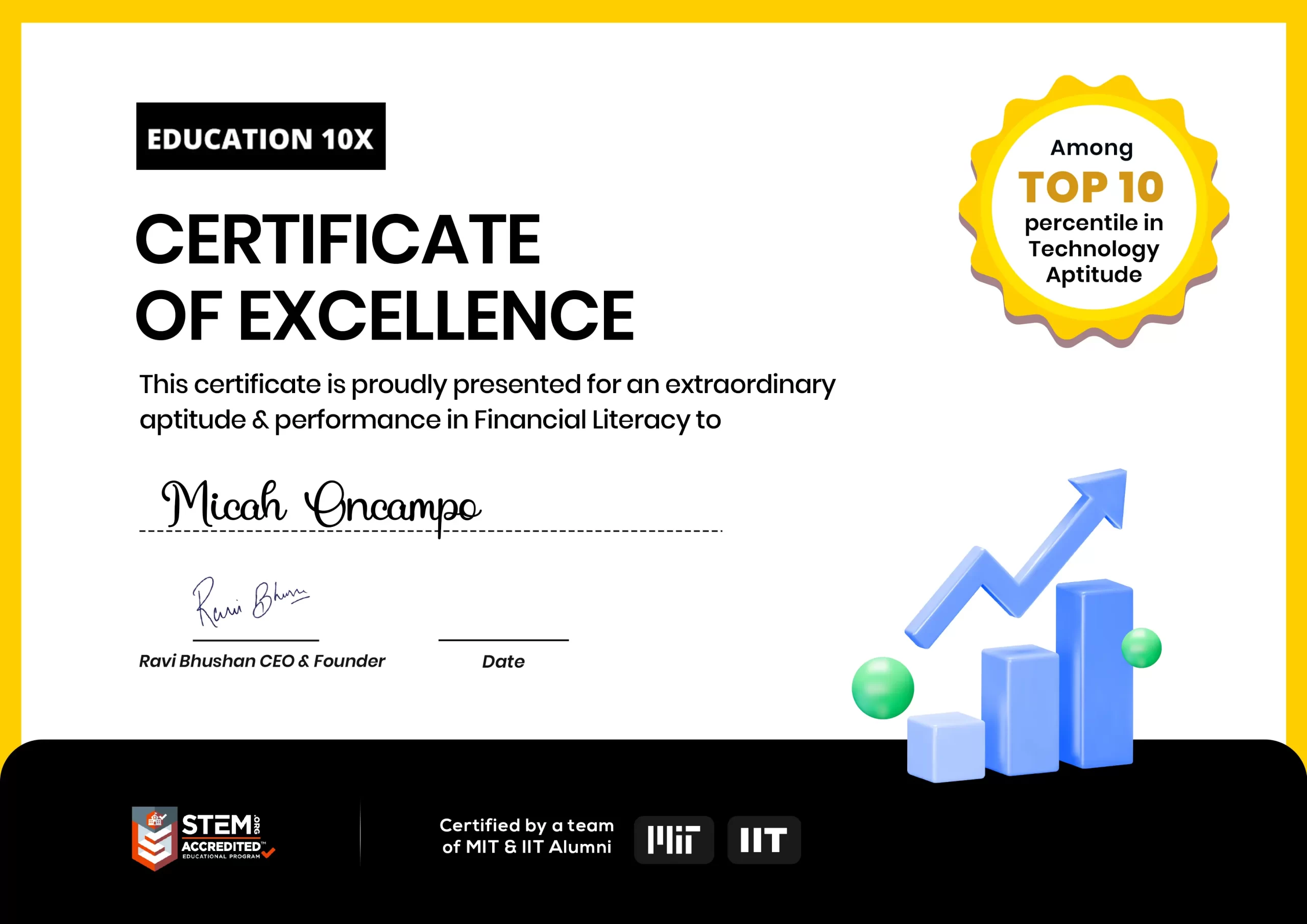In a world driven by numbers and financial decisions, raising financially responsible and empowered individuals becomes an essential duty for parents and educators alike. As our children take their first steps into an ever-evolving economic landscape, it is crucial to equip them with the necessary tools and knowledge to navigate the realm of money confidently. By instilling solid money lessons early on, we can empower our kids to make wise financial choices and set them on a path toward lifelong financial success.
Welcome to our blog on “Money Lessons for Kids: Practical Tips for Teaching Kids about Money!” Here, we’ll embark on a journey to explore practical strategies that will help you foster a healthy understanding of money in your children, regardless of their age. From early concepts of saving and budgeting to more complex topics like investments and entrepreneurship, we’ll provide you with a comprehensive guide to nurturing financial literacy in your little ones.

With each passing day, our children encounter numerous financial experiences that shape their perception of money. From receiving pocket money to making their first purchase, these early encounters can lay the foundation for a lifetime of healthy financial habits. By incorporating interactive lessons and engaging activities into their daily lives, we can ensure that money becomes an exciting tool rather than an intimidating mystery.
Throughout this blog, we will delve into a multitude of practical tips that cater to different age groups and learning styles. Whether you have curious toddlers, enthusiastic tweens, or independent teenagers, we have tailored advice to suit every stage of your child’s financial development. You’ll discover effective methods to introduce core concepts, encourage responsible spending, foster savings habits, and even inspire entrepreneurial endeavors in your kids.
Teaching children about money is not only about the practicalities of financial management but also about cultivating values such as patience, delayed gratification, and philanthropy. Our blog will explore ways to instill these vital principles, ensuring that your children grow up with a balanced perspective on wealth and its significance in their lives.
So, join us on this enlightening journey as we unveil the secrets to raising financially literate kids. Let’s equip them with the skills they need to make sound financial decisions, build a secure future, and ultimately become responsible contributors to society. Together, we can empower the next generation to thrive in a world where financial literacy is a superpower.
Get ready to unlock the door to a brighter future—one where your children confidently handle money and set sail towards financial independence. Let’s embark on this empowering expedition and unleash the financial superheroes within our kids!
Table of contents
- Introduction to the importance of teaching kids about money
- When to Start Teaching Your Kids About Money
- Tips for Teaching Kids About Money
- Introducing Budgeting and Saving Concepts to Kids
- Teaching your child about Budgeting, Saving, and Investing
- Common Mistakes to Avoid When Teaching Kids About Money
- How to set Financial Goals with your child and help them achieve them
- How to introduce your child to the concept of Earning Money and Working
- Resources for Parents to Continue Financial Education at Home
- Conclusion
- Frequently Asked Questions
Introduction to the importance of teaching kids about money
Kids and money may not seem like a natural combination, but it’s actually one of the most important lessons parents can impart to their children. Financial education is an essential life skill that kids need to learn early on.
Teaching kids about money management for kids can help them develop good habits and make informed decisions that can positively impact their lives for years to come.
The reality is that financial education is not something that kids typically learn in school. That’s why it’s up to parents to teach their children about money. And it’s never too early to start!
By teaching kids about money management at a young age, parents can help their children develop a strong financial foundation that they can build upon as they grow up.
The benefits of teaching kids about money are numerous. Kids who understand the basics of budgeting, saving, and investing are more likely to be financially responsible adults. They will know how to avoid debt, manage their money wisely, and achieve their financial goals.
Financial education can also help kids develop critical thinking and decision-making skills that will serve them well throughout their lives.
Overall, the importance of teaching kids about money cannot be overstated. By making financial education a priority in your child’s life, you can help them develop healthy money habits that will set them up for a bright financial future.
When to Start Teaching Your Kids About Money
Personal finance is an important skill to learn and it’s never too early to start teaching your children about it. Many experts recommend starting as young as age 3 or 4, but the exact age will depend on your child’s maturity level and understanding of money.
Some signs that your child may be ready to start learning about personal finance, including finance for kids, include asking about money, showing an interest in buying things, and understanding the concept of exchange (trading one thing for another).
At a young age, you can start by teaching basic concepts like identifying coins and bills, counting money, and discussing the value of different objects. As they grow older, you can introduce more complex ideas like budgeting, saving, and investing.
Overall, it’s important to make personal finance education a part of your child’s regular learning routine. It may not be the most exciting topic, but it’s an essential life skill that will benefit them in the long run.
Tips for Teaching Kids About Money
Teaching kids about money is not just important, but it can also be a fun and rewarding experience. As a parent or guardian, it’s essential to impart the knowledge of money management skills that will help your child make wise financial decisions throughout their life.
Here are some tips to help you teach your child about money.
1. Make It Age Appropriate:
When it comes to teaching your child about money, it’s essential to start with age-appropriate topics. Young children, start with simple concepts like recognizing and counting coins and dollars, while older children can learn about budgeting, saving, and investing.
2. Involve Your Kids in Everyday Spending Decisions:
One way to teach your kids about money and instill teaching kids responsibility is by involving them in everyday spending decisions. For instance, take them grocery shopping and teach them to compare prices and make choices based on value for money. You can also take them to the bank and teach them how to deposit and withdraw money.
3. Teach Your Kids the Value of Money:
Teaching your kids the value of money is one of the essential lessons that you can give them. You can do this by teaching them about the value of hard work and that money doesn’t come easily. For instance, encourage your child to earn money by doing household chores.
4. Use Real-life Examples:
Using real-life examples can make it easier for your child to understand the concepts of money management. For example, explain the difference between needs and wants by using examples of what you must have versus what you would like to have.
5. Encourage Savings:
Teaching your child to save, ideally with the best savings account for kids, is a great way to help them manage their money better. Encourage them to save a percentage of their pocket money or birthday gifts in a piggy bank, and explain how it can grow over time with interest.
6. Avoid Spoiling Your Kids:
Spoiling your kids with expensive gifts and allowances can hinder their ability to understand the value of money. It’s essential to teach your child that money is not infinite and that it needs to be earned and saved.

Introducing Budgeting and Saving Concepts to Kids
One of the most important concepts to teach your kids when it comes to money is budgeting and saving. These skills will help them not only in the short term but throughout their entire lives. Here are some tips for introducing budgeting and saving concepts to your kids:
1. Start with a basic understanding of money: Explain to your child what money is, why we use it, and how it works. This will help them understand why budgeting and saving is important.
2. Teach them about needs vs. wants: Help your child understand that there are things they need (like food and shelter) and things they want (like toys and treats). This will help them prioritize their spending.
3. Set up a budget: Help your child create a budget for their allowance or money they receive from chores. Show them how to divide their money into different categories (like saving, spending, and donating).
4. Encourage them to save: Teach your child about the importance of saving money for a rainy day or for a larger purchase they may want in the future. Help them set savings goals and track their progress.
5. Let them make mistakes: While it’s important to guide your child when it comes to saving and budgeting for kids, it’s also important to let them make mistakes and learn from them. This will help them develop their financial literacy skills and become more responsible with money.
Introducing budgeting and saving concepts to your kids may seem daunting at first, but it’s an essential step in their financial education. By teaching your child about budgeting and saving, you’re setting them up for a lifetime of financial success.
Teaching your child about Budgeting, Saving, and Investing
Once your child has a grasp of basic money concepts like counting coins and dollars, it’s time to introduce them to the idea of budgeting, saving, and investing. Budgeting is an important skill for children to learn as it helps them understand the value of money and how to prioritize their spending.
Begin by explaining the concept of needs vs. wants. Needs are the things that are necessary for survival, such as food, shelter, and clothing. Wants are the things that are not essential for survival, like toys, games, and treats.
Encourage your child to prioritize their spending, including budgeting for kids, by creating a budget with them. This will teach them the importance of spending their money wisely and planning for the future.
Saving is also an important concept to introduce to your child. Explain to them that by putting money away, they can reach their financial goals faster. You can start by encouraging them to save a portion of their allowance or gift money. Once they have saved enough, they can buy something they have been wanting or save for a bigger purchase.
Lastly, introduce the concept of investing to your child. While this may seem like a complex topic, you can make it simple by explaining that investing means putting money into something that can grow over time.
You can use examples like putting money in a savings account, investing in stocks, or buying property. While your child may not be ready to invest at a young age, it’s important for them to understand the concept and the potential benefits of investing.
Teaching your child about budgeting, saving, and investing may take time and patience, but it’s a crucial aspect of their financial education. By understanding these concepts at a young age, they will be better equipped to handle their finances in the future.
Common Mistakes to Avoid When Teaching Kids About Money
Teaching kids about money can be a daunting task, but it is crucial for their future financial success. As you begin the process of teaching your kids about money, it is important to avoid common mistakes that could hinder their learning.
One mistake parents often make is shielding their children from financial struggles. While it may be tempting to hide financial stress from your kids, it is important to be transparent with them.
Children who are sheltered from financial struggles may not understand the value of money and may have unrealistic expectations about what they can buy.

Another common mistake is not giving your kids enough responsibility for money. While it is important to guide and teach your children about money, it is also important to let them make their own financial decisions. This helps them learn the consequences of their actions and can set them up for better financial decision-making in the future.
Additionally, parents should avoid using money as a form of punishment or reward. This can create an unhealthy relationship with money and may lead children to view it as a tool for manipulation instead of a means of achieving financial independence. Instead, opt for positive parenting techniques that promote a healthy understanding of money and its role in their lives.
Lastly, it is important to remember that children learn by example. Parents who struggle with their own finances or have poor financial habits may unintentionally teach their children the wrong lessons about money. It is crucial to lead by example and model healthy financial habits for your kids to emulate.
In summary, teaching kids about money can be a challenge, but it is important to avoid common mistakes. By being transparent, giving kids responsibility, avoiding using money as punishment or reward, and modeling good financial habits, parents can set their kids up for financial success.
How to set Financial Goals with your child and help them achieve them
One important aspect of teaching kids about money is helping them set financial goals and achieve them. This can instill valuable habits and skills that will last them a lifetime. Here are some steps parents can take to help their children set financial goals:
1. Talk about the importance of goal-setting: Before diving into specific financial goals, it’s important to discuss the importance of setting goals in general. Explain to your child that having a clear idea of what they want to achieve and working towards it can help them feel more in control of their lives and achieve greater success.
2. Help them identify specific goals: Depending on your child’s age and interests, financial goals could include saving up for a new toy, putting money aside for a family vacation, or setting aside funds for future education. Encourage your child to think about what they want to accomplish with their money and what steps they need to take to achieve those goals.
3. Break down the steps to achieve each goal: Once your child has identified their goals, work with them to break down the steps needed to achieve each one. This could involve determining how much money they need to save each week or month, identifying opportunities to earn extra income through chores or part-time jobs, and creating a timeline for achieving the goal.
4. Provide ongoing support and guidance: Setting financial goals is just the first step – it’s also important to provide ongoing support and guidance as your child works towards achieving those goals. This could involve checking in regularly to see how they’re progressing, helping them problem-solve if they hit a roadblock, and providing encouragement and praise as they make progress toward their goal.
By helping your child set financial goals and providing ongoing support and guidance, including engaging in financial literacy activities for kids, you can help them develop valuable financial skills that will serve them well throughout their lives.

How to introduce your child to the concept of Earning Money and Working
One important aspect of teaching kids about money is introducing them to the concept of earning money and working. As a parent, you can start by talking to your child about the different ways people can earn money, such as through a job or starting a business.
It’s important to explain to your child that money doesn’t just appear out of thin air and that people work hard to earn it. This can be a valuable lesson in building a work ethic and helping your child understand the value of hard work.
One way to introduce your child to the concept of earning money, including learning money for kids, is by giving them age-appropriate chores around the house. This not only teaches them responsibility but also the idea of earning money through work. You can offer to pay them for each chore they complete or provide a weekly allowance based on their responsibilities.
Another way to introduce your child to the idea of earning money is by encouraging them to start a small business. This could be anything from a lemonade stand to selling handmade crafts. Not only does this give your child a sense of accomplishment, but it also teaches them about the process of starting a business and making money.
It’s important to make sure that your child understands the value of saving their hard-earned money instead of spending it all at once. You can encourage them to save a portion of their earnings in a piggy bank or open a savings account for them. This teaches them the importance of saving for the future and how it can benefit them in the long run.
Overall, introducing your child to the concept of earning money and working is an essential part of teaching them about finances. By starting early and offering age-appropriate opportunities, you can help them develop a strong work ethic and a better understanding of the value of money.
Resources for Parents to Continue Financial Education at Home

While schools are starting to incorporate financial education into their curriculum, it’s important for parents to continue reinforcing these concepts at home. Here are some resources that can help:
1. Online Games: There are several websites that offer free online games for kids that teach children about money. Some of the popular ones include Financial Football, Money Metropolis, and The Mint’s Money Game.
2. Books: There are many children’s books that focus on financial literacy. Some of the popular ones include “The Berenstain Bears’ Trouble with Money,” “Alexander, Who Used to Be Rich Last Sunday,” and “Lemonade in Winter: A Book About Two Kids Counting Money.”
3. Podcasts: There are several podcasts that teach financial literacy to kids. Some of the popular ones include “Million Bazillion,” “The Secret Millionaires Club,” and “Planet Money.”
4. Apps: There are several apps that teach children about money management and budgeting. Some of the popular ones include “FamZoo,” “RoosterMoney,” and “Savings Spree.”
5. Role-Playing Activities: Parents can also encourage their children to play games that involve role-playing as a business owner or a consumer. This helps children understand how money flows through the economy.
By using these resources, including money lessons for kids, parents can make financial education a fun and interactive experience for their children. It’s important to remember that teaching financial literacy is an ongoing process, so make sure to incorporate these activities into your family’s routine.
Conclusion
Teaching your children about money at any stage is going to take time on your part. It won’t always be easy. But if you want your children to know how to successfully manage their money when they get older, taking the time now will be worth it.
One of the best ways to teach your kids about handling money is to give them a chance to make some of their own!
FinCHAMPS by BrightCHAMPS is a platform where Financial Literacy courses are offered that equips your child with new-age finance skills through our scientifically designed curriculum that deploys the right mix of academics, games, and activities to inculcate healthy financial habits in kids.
The in-session activities (such as applying Opportunity Cost Framework for effective decision making, playing Stock Market Simulations, etc.), and Home Work Projects (which include creating a Budget for Home, Expense Tracker, Fundamental analysis of stocks, etc.) make sure that the concepts learned are applied in real life scenarios thereby reinforcing and internalization of concepts.
Frequently Asked Questions
Having their own money to spend will teach them quickly how much things cost, how to be more selective with their purchases, and how to save for larger items. Saving money for things they need can teach children that money is essential for everyday purchases.
Ans 2. By age 3, your kids can start grasping basic money concepts. By age 7, many of their money habits are already getting set. So, between the ages of 6 and 10 is a good time to get kids thinking about the value of money.
Ans 3. You can start by Introducing money basics then put together money puzzles to show & play with them. Show kids how to keep their money safe & craft a water bottle piggy bank. Take the Piggy Bank Quiz & buy some chips to practice counting money.
Ans 4. Some common mistakes to avoid are-
· Assuming they’ll learn it on their own
· Paying them for things they should do for free
· Controlling all their spending
· Underestimating what they can understand
· Forcing them to save
· Shopping without them
Ans 5. Help them set goals via talking & planning with them for-
· Confront unrealistic goals
· Choose just-out-of-reach goals
· Set specific goals
· Break it down
· Set up checkpoints
· Make it a family plan
Ans 6. Some of the ways are –
· Discuss Wants vs. Needs
· Let Them Earn Their Own Money (Small Home chores or activities)
· Set Savings Goals
· Provide a Place to Save
· Have Them Track Spending
· Offer Savings Incentives
· Leave Room for Mistakes
· Act as Their Creditor
It’s important for parents to continue reinforcing these concepts at home after school, they can do so with the help of online games, books, Apps, role-playing activities, etc.


 We are an army of educators and passionate learners from BrightChamps family, committed to providing free learning resources to kids, parents & students.
We are an army of educators and passionate learners from BrightChamps family, committed to providing free learning resources to kids, parents & students.








